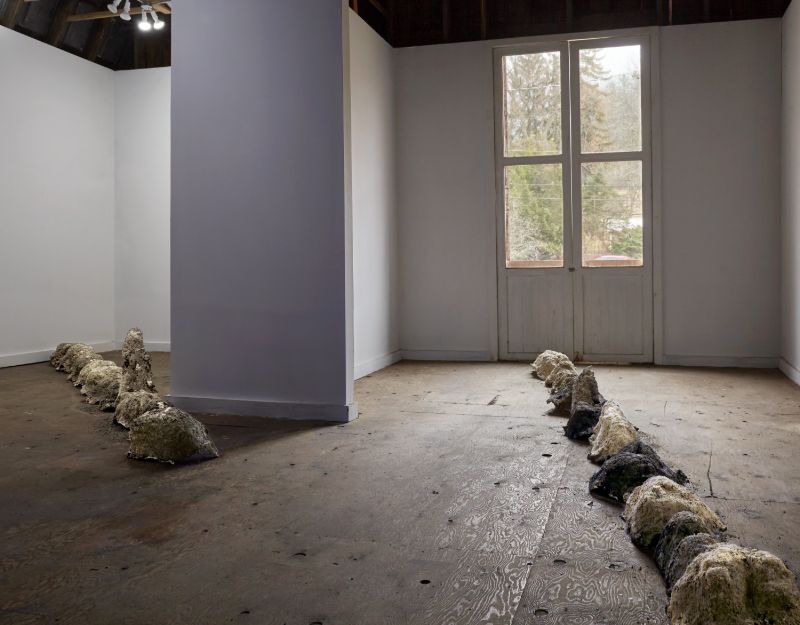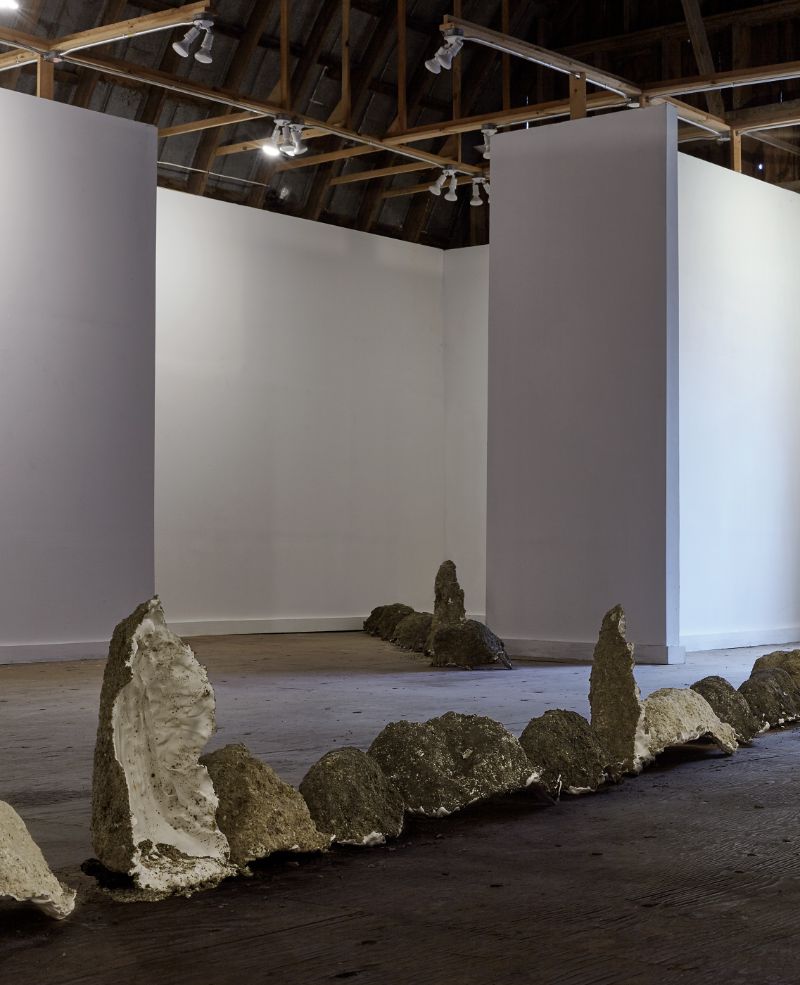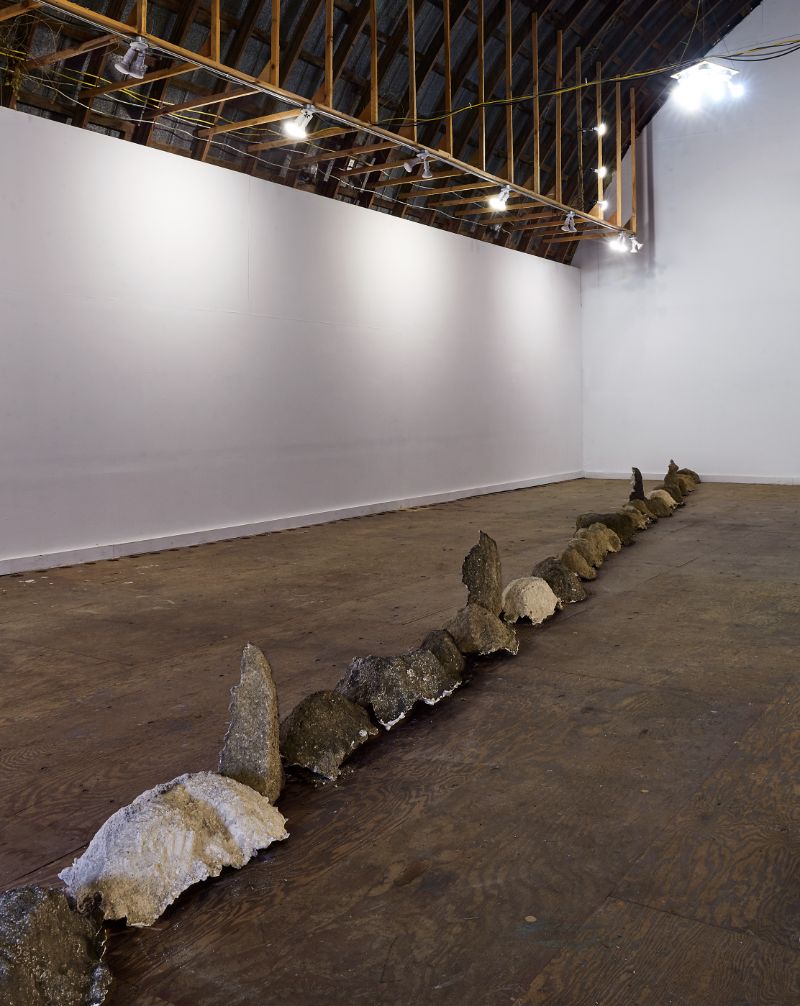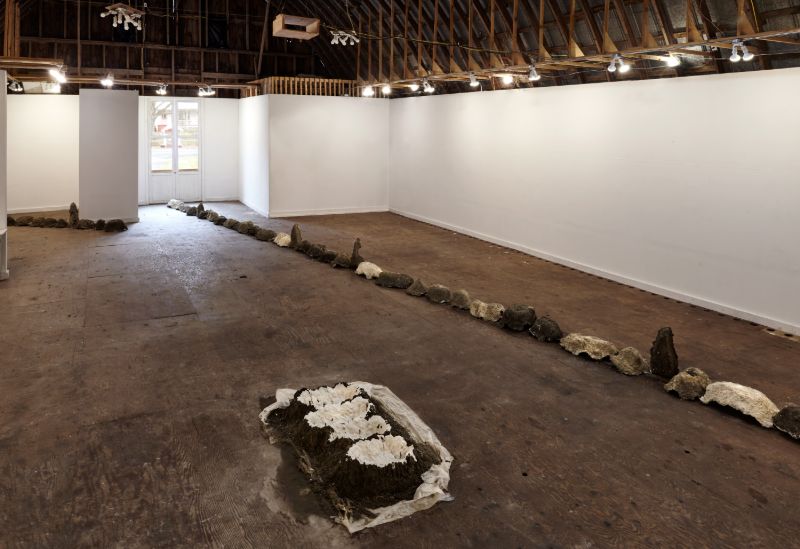William Corwin
April 5th to May 17th
This show is in collaboration with Geary Contemporar
Dolly Bross Geary and Jack Geary
34 Main Street, Millerton, NY

William Corwin, Alps, 2025, Photo by Theo Coulombe
What is the difference between a rock and a mountain? A protuberant rock formation over 1000 feet is generally characterized by geologists as a mountain, but from the perspective of an ant, that would make most rocks mountains, based on an ant-foot metric, but would also, for ants, probably make most human sized mountains too big to be registered consciously: in the same way that we can’t really register something on the magnitude of a continent, or a very large island.
Lots of people have done things with stones already. Besides things like rings of standing stones, as at Karnac or Stenness, there’s Richard Long and Andy Goldsworthy etc. I am less interested in some kind of geologic statement that thinking about what we think mountains are.
As a city dweller in a region where mountains are at least a two hour drive away, my idea of mountains was very circumscribed by social and mythological imagery. If you sat me down and asked me to draw a mountain, the image I would make would be a simple triangle rising out of the horizon. Holy mountains, pyramids, ziggurats, even skyscrapers; all of these mytho-architectural forms present an idealized mountain which smaller mountain ranges, like the Catskills, don’t do much to dispel. And certainly there are some mountains, like Mount Fuji and Mount Kilimanjaro, which seem to fit the stereotype.
When I did a residency at the Atelier Mondial in the spring and summer of 2023, I was plonked down in Basel for three months. My stipend allowed me to purchase a monthly train pass which in turn allowed me to take any train at any time going anywhere in Switzerland. I could get almost to any place in Switzerland in about three to four hours, and so I spent most of my time riding the trains, which were very nice, looking at the mountains. The mountains in Switzerland are very different from what I was used to—they defined the landscape itself—the mountains were not a climatic detail—and so the concept of the sole holy mountain was replaced by the concept of the distinctive profile.
I would sit on the train and try to copy the profiles of the mountain ranges as they passed by. Sometimes the Swiss people at the residency, especially the ones who liked to hike, would recognize (or sort of recognize) the profiles I had drawn. So I gained a window into how they saw mountains—as individual signatures on the horizon, part of a long craggy line of script. There are really only a few, very distinctive truly protuberant rock formations in Switzerland: the Matterhorn is the most famous of those, and it is quite terrifying.
I decided to make mountains during my residency in Basel because I thought it would be funny for Swiss people to have a foreigner make little Alps, ones that you could almost trip over, in his studio. I could say things like “don’t step on the mountains,” which in Switzerland is quite ironic since that is what you’re doing most of the time. I could also play with the profiles of the mountains that I made—making them bumpy ridges, rather than the ziggurats and pyramids which I was used to.
In the Re Institute installation, the mountains are about dividing a space. The little ranges cut the room up into several regions and require that you step over them to get to another zone. This is easier for some than for others. Some people, like my 91 year old dad, probably won’t attempt to get over the mountains, so parts of the room are off-limits to him. There are other ideas at play, like visualizing things that are too big and make you feel uncomfortable. So, like the difference between a mountain and a rock for an ant, it’s all about things being relative to your size.
William Corwin

William Corwin, Alps, 2025, Photo by Theo Coulombe

William Corwin, Alps, 2025, Photo by Theo Coulombe

William Corwin, Alps, 2025, Photo by Theo Coulombe
Corwin’s work has been reviewed in Hyperallergic, Art Monthly, The Hudson Review, White Hot, and ArtNews, among others. In 2023 he did the Atelier Mondiale Residency in Basel, The Library Residency in Athens, and has also done residencies at Art Omi, The Clocktower (and was a recipient of a Jerome Foundation Grant), The Lower Manhattan Cultural Council Residency and The NADAHouse Residency on Governors Island, the Gestatelier Residency in Hamburg, and a US State Department Artist Residency in Taipei. He has exhibited in London, Hamburg, Beijing, Taipei, Grand-Bressac, France, and is represented by Geary Contemporary in New York and will be presented by the gallery at Expo Chicago in April.